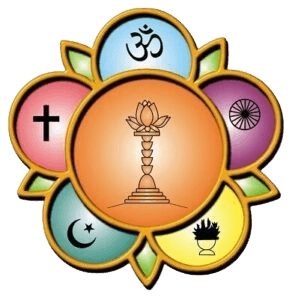On the auspicious occasion of Devi Navaratri, the sacred precincts of Sai Kulwant Hall once again resounded with wisdom and devotion, as the 63rd Prasanthi Vidwan Mahasabha entered its second day. The evening featured a deeply enlightening discourse by Prof Sagi Kamalakar Sharma, whose words wove together science, scripture, and spirituality into a seamless fabric of understanding.
At the very outset, Prof Sharma drew a striking parallel: the ‘Atom’ claimed by scientists and the ‘Atma’ realised by seekers. Though pronounced almost alike, their realms appear different—yet, in essence, both point to the subtle mystery of existence.
Reflecting on the significance of Devi Navaratri, he explained that just as different people perform diverse forms of seva during these sacred days, so too does the Divine Mother manifest in myriad ways, sustaining creation through Her infinite expressions.
With scholarly clarity and devotional fervour, Prof Sharma elaborated on the mantras chanted during the morning yajnas, unveiling their profound inner meaning. He described Bala Tripura Sundari, the tender form of the Divine Mother, as the Aruna Kirana—the first red rays of the rising sun. These rays, turning golden as they spread, enable photosynthesis and sustain life itself, signifying Annapoorna, the giver of food and nourishment.
The metaphor extended further: the white light stands for Saraswati, the goddess of wisdom; the hymn of Sri Suktam reflects Hiranya Prakaram, which he likened to the ozone layer—protecting, sustaining, and balancing life within and without. Even the syllable ‘Eem’, he explained, resonates with the meaning of oxygen in the Vedas. By extending it with sa and ra, Bharatiya sages sanctified it as ‘Sreem’, symbolising auspiciousness and prosperity.
Touching on the Mother’s role as Roga Nirodha Shakti, the healer of all afflictions, Prof Sharma beautifully clarified the concept of Upavasana—not mere fasting, but drawing the mind closer to God, away from distractions. When contemplated upon as Raja Rajeshwari, the Divine Mother shines forth as the embodiment of wisdom, strength, and benevolence.
In a fitting conclusion, Prof Sharma reminded that true worship is to see God in man and to serve Him through daanam or Narayana Seva. This is the eternal teaching of Bhagawan Sri Sathya Sai Baba—service as worship, and love in action.
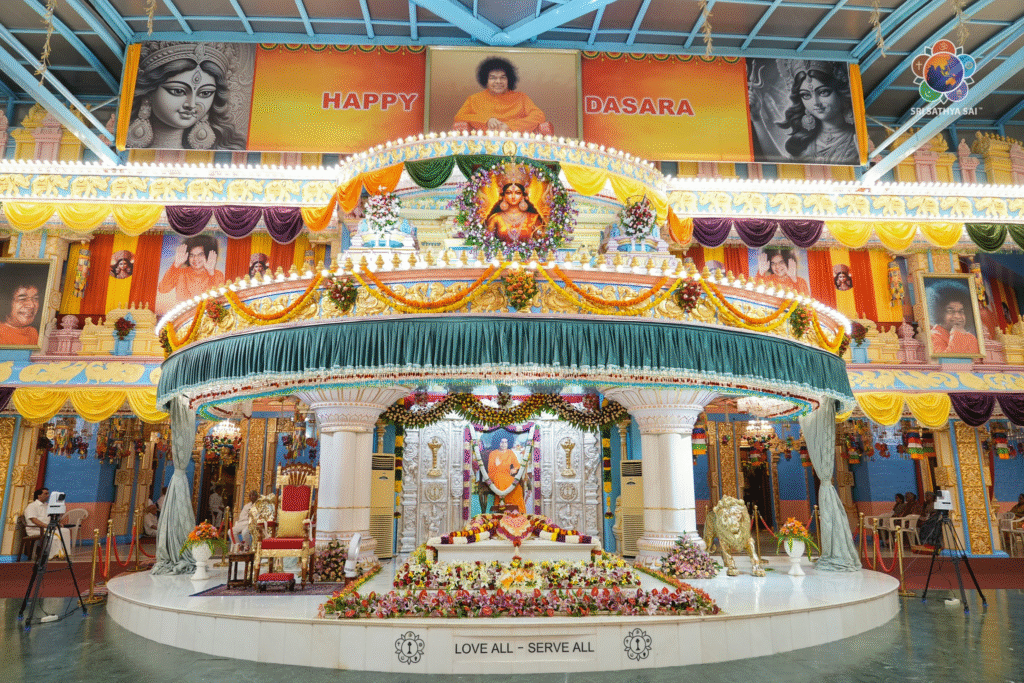
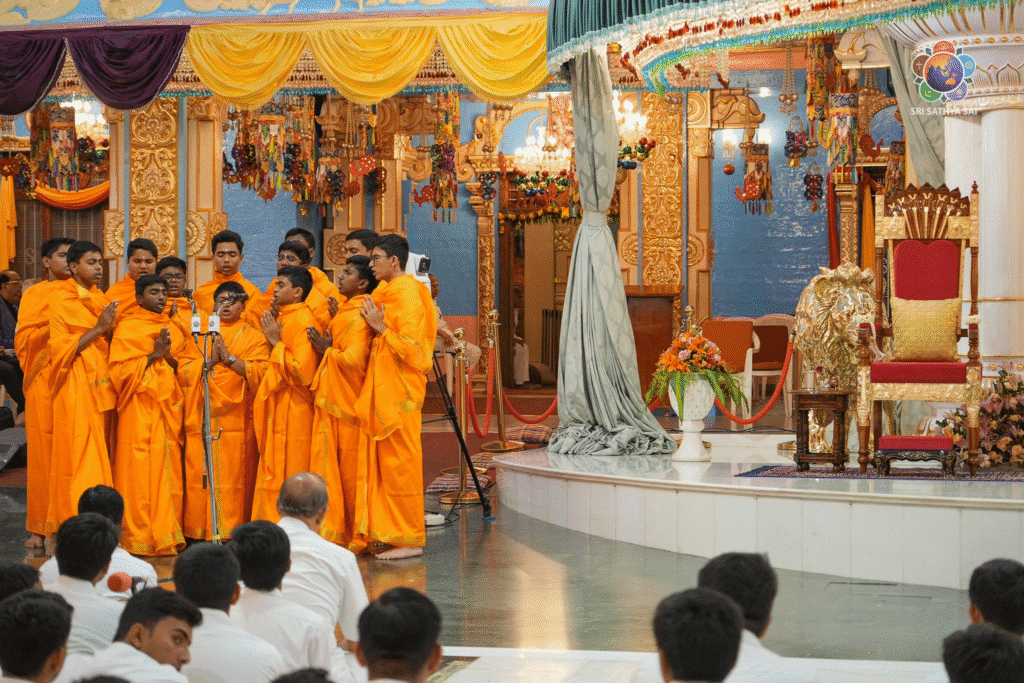
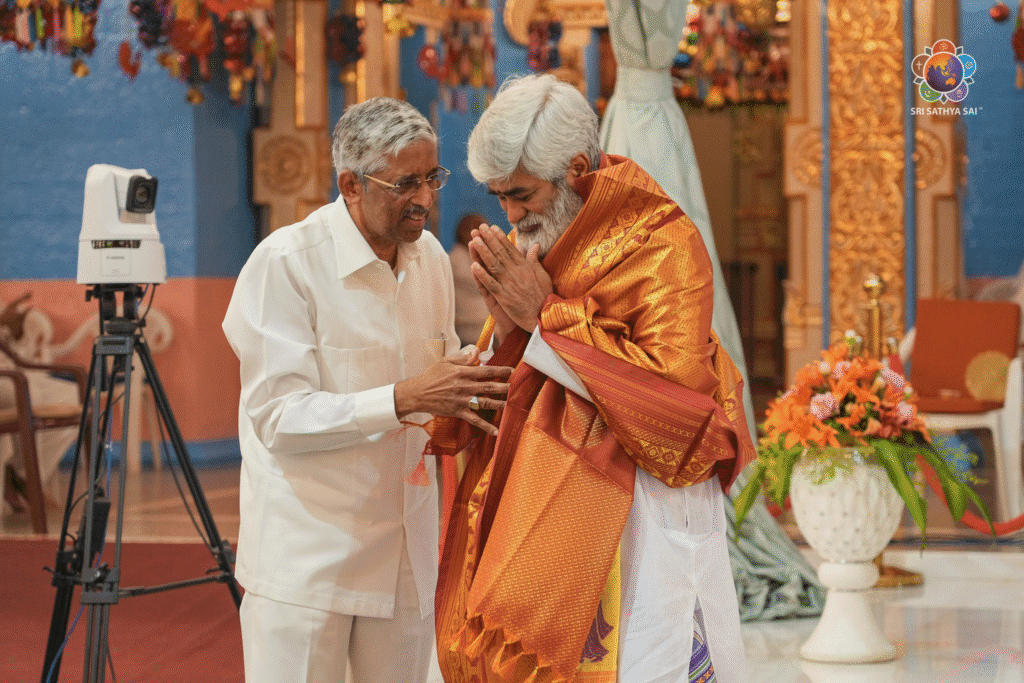
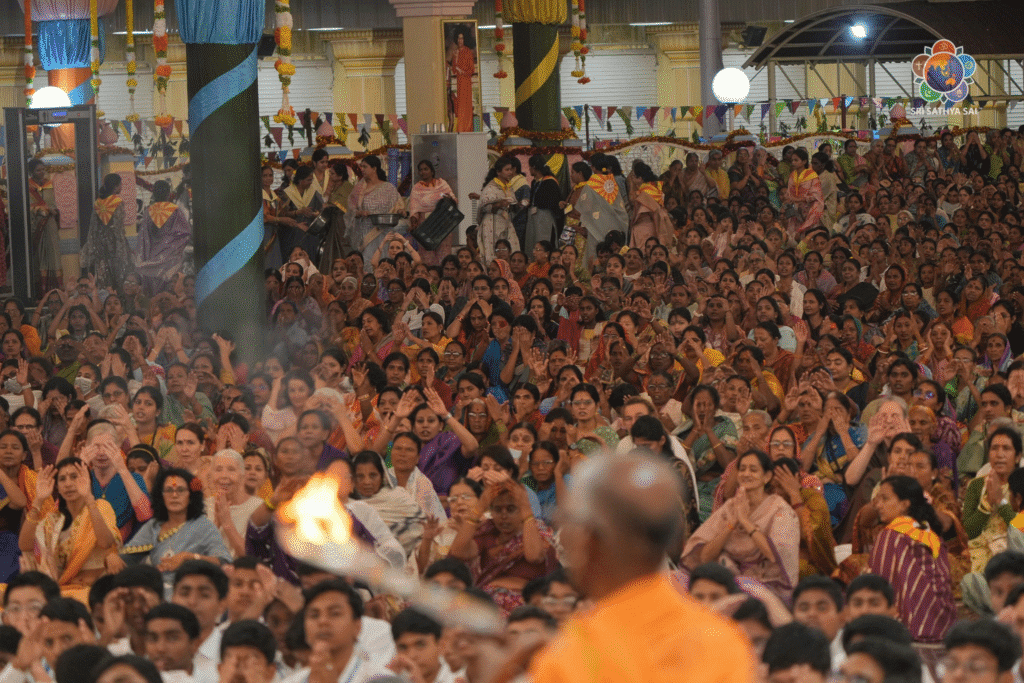
for more pictures:
https://www.facebook.com/share/p/17QHKZUbbn
https://www.sssmediacentre.org/gallery/68d7e9d9768fa8206279fe9d
